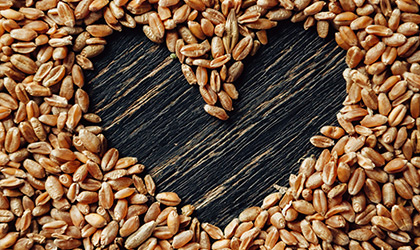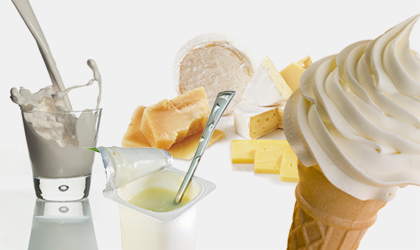
Gut health now stands at the forefront of the health and wellness arena, with more and more research suggesting it impacts far more than just the digestive system. The gut, it seems, is an extraordinary interface between the inside and the outside world, affecting almost every area of the body, including mood, immunity and sleep.
Without a healthy gut, we can’t digest and extract the nutrients from our food regardless of its nutritional value. That’s why good health always has to start with good gut health.
It can be helpful to think of our gut microbiome – the trillions of gut bacteria in our digestive tract – like a car. And if we look after this car, it will, in turn, look after us. It’s a win-win situation: we give the car fuel and it will work alongside us.
Here, we hope to showcase that a happier, healthier gut microbiome means a happier, healthier you.
The low FODMAP diet
There’s no denying that your gut loves fibre. But some high-fibre foods can be problematic for those with sensitive digestive systems who experience anything from bloating and gas to constipation and mixed bowel habits. Some people with highly compromised guts struggle to digest FODMAP foods. That’s why nutritionists and dieticians often recommend a short-lived low FODMAP diet to give the gut a chance to heal.
What is FODMAP?
FODMAP stands for Fermentable Oligosac-charides, Disaccharides, Monosaccharides, and Polyols. The ‘fermentable’ aspect is important. It means that your gut microbes produce gas when digesting FODMAP foods, which can lead to bloating, pain, and gas if you already have a sensitive gut.
High FODMAP foods
We generally stereotype high FODMAP foods as healthy (enter asparagus, avocado, and apples). But in high quantities they can make those who already experience digestive symptoms feel worse. Here are just some of the foods you should eliminate on a low FODMAP diet.
-
Garlic
-
Onions
-
Artichoke
-
Asparagus
-
Fresh beetroot
-
Black eye peas
-
Butter beans
-
Cauliflower
-
Celery
-
Mange tout
Low FODMAP foods
-
Aubergine
-
Kale
-
Broccoli
-
Carrots
-
Parsnips
-
Tomatoes
-
Bananas
-
Grapes
-
Orange
A short-term change
You don’t want to blindly follow a low FODMAP diet forever. Ideally, you’d use it for a short period – around two to six weeks – to let the gut repair. Then, you can start to reintroduce the broadest diet possible. However, there may still be a few high FODMAP foods that you can’t tolerate without symptoms even after the diet. But this isn’t a cause for concern. Some people will always have sensitivities to certain foods – and that’s okay.
If you’re considering following a low FODMAP diet, we highly recommend working with a nutritionist to achieve the best possible results.
Eat mindfully
We’ve already established that what we eat and when we eat is important for our gut. But how we eat is also critical. After all, digestion begins in the mouth – not the stomach. Letting our digestive tract relax, and thoroughly chewing our food, will promote healthy digestion and reduce any unpleasant digestive symptoms, such as bloating and indigestion.
Natural support for digestion
To keep your digestive system happy, you may wish to increase your intake of these nutritional players.
Peppermint
Peppermint has long been used as a digestive aid. Much of the research continues to highlight that peppermint has a soothing and calmative action on the digestive system (38).
Bromelain
A protein found in the stem of fresh pineapple, bromelain is best known for its use as a digestive enzyme.
Ginger
Characterised by its zingy taste, ginger is another well-known digestive aid. Its ‘warming’ properties are believed to have a settling effect on the intestinal system.
Milk Thistle
Milk Thistle is traditionally used for the relief of occasional overindulgence, indigestion and upset stomach.
An easy tool to fix digestive problems?
Mindful eating is widely understood to reduce stress in your body and brain, which cultivates an optimal environment for digestion (39).
Practising mindful eating
-
Eat your food slowly; don’t rush
-
Chew thoroughly
-
Eat in silence
-
Focus on how the food makes you feel
-
Stop eating when you’re full
-
Pay attention to the way your meal looks, tastes and smells
-
Eliminate distractions: turn off your phone and don’t eat in front of the TV
Feed your gut bugs
While it’s important to populate our guts with live bacteria, we also need to think about what we feed our hungry microbes. Like us, they need sustaining and nourishing – and with the right selection of foods, you will help them grow into big and strong microbes. Ultimately, this will keep your microbial pet strong and in the best possible shape to look after you and your overall health.
MACs
Microbiota-accessible carbohydrates (MACs) are complex carbohydrates that your magical microbes enjoy eating. Once broken down and digested, your gut bugs produce important by-products, including short-chain fatty acids, or SCFAs, which are vital for countless healthy responses in the body. Problem is, Western diets are relatively low in MACs.
Eat it: Your hungry microbes love Jerusalem artichokes, which are one of the best sources of MACs. Onions, garlic, leeks, bananas, cauliflower, okra and broccoli are also great choices.
Chicory root
Derived from the dandelion family, chicory root is widely believed to play a role in maintaining normal intestinal health. Chicory root contains a specific type of soluble fibre called Fructo-oligosaccharide (FOS). Aside from feeding the live bacteria in your gut, soluble fibre, like FOS, also draws moisture into the gut and may support regularity.
Eat it: You can add powdered chicory root to soups, stews, or salads. There’s even been a move towards chicory root coffee, which is naturally caffeine-free.
Beta-glucans
Beta-glucans are a type of fibre found in the cell walls of specific yeasts. Research suggests this fibre may feed the live bacteria dwelling in your gut (30).
Eat it: You can find naturally occurring beta-glucans in cereal grains, like barley, wheat and oats.
Oily fish
Emerging research suggests the omega-3s found in oily fish may alter the gut microbiome composition and increase the production of short-chain fatty acids (31). These new findings position fish oil as another potential superfood for your gut bugs.
Eat it: The best sources of oily fish include salmon, mackerel, anchovies, herring and sardines. It’s generally recommended to eat two to three portions of oily fish every week to support your overall health.
Diversify your diet
There are trillions of microorganisms, mostly bacteria, dwelling in our nine-metre digestive tract. These bacteria produce legions of hormones and vitamins for our brain and every other organ in the body. This microbial community is wholly reliant on what we feed it. We have the power to shape and sustain it. And since each bacterium has different taste buds and preferences, diversity is key.
Aim for 30 different plants foods every week
According to gut expert Dr Meghan Rossi, we should all be aiming for 30 different plant foods a week to support our gut health (27). This doesn’t just mean loading up on fruit and veggies. This number includes all plant foods: grains, legumes, nuts, seeds, herbs and spices.
Eat the rainbow
Eating a rainbow of plant foods will also help to diversify your diet. The different colours in plant foods are known as phytonutrients. The more colours you eat, the more variety of these powerful nutrients you’ll be getting, and the healthier your gut will be. Think the rich hues of blueberries, carrots and beetroot.
Why all the fuss about fibre?
Plant foods contain dietary fibre, which your gut microbes break down in fermentation to produce a range of different metabolites. And it’s the production of metabolites that seems to be so important since they interact with every cell in the body.
References:
27. How to get your gut-loving 30 plant points a week - The Gut Health Doctor. (2021). https://www.theguthealthdoctor.com/how-to-get-your-gut-loving-30-plant-points-a-week/
30. Beta-glucan shows potential prebiotic activity. (2021). https://www.nutraingredients.com/Article/2010/06/02/Beta-glucan-shows-potential-prebiotic-activity
31. Vijay, A., Astbury, S., Le Roy, C., Spector, T., & Valdes, A. (2020). The prebiotic effects of omega-3 fatty acid supplementation: A six-week randomised intervention trial. Gut Microbes, 13(1), 1863133.
38. Alammar, N., Wang, L., Saberi, B., Nanavati, J., Holtmann, G., Shinohara, R. T., & Mullin, G. E. (2019). The impact of peppermint oil on the irritable bowel syndrome: a meta-analysis of the pooled clinical data. BMC complementary and alternative medicine, 19(1), 21.
39. Gaylord SA, Whitehead WE, Coble RS, et al. (2009) Mindfulness for irritable bowel syndrome: protocol development for a controlled clinical trial. BMC Complement Altern Med. 29:24
You Might Also Like

Keri
Keri Filtness has worked in the Nutrition Industry for 19 years. She is regularly called upon for her professional comments on health and nutrition related news. Her opinions have been featured by BBC3, Prima, Vitality, The Mirror, Woman’s Own and Cycling Weekly, amongst others. She has also worked one to one with journalists, analysing their diets and health concerns and recommending changes and additions, where appropriate.
View More



